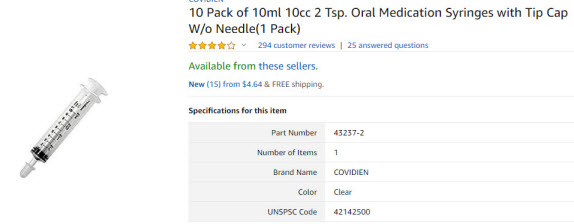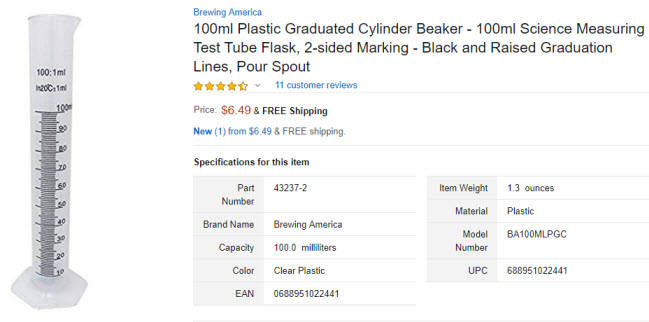-
Principles
Tablets (or pills) are commercially available at defined doses: 0.5 mg, 1 mg, 2 mg, 5 mg, 10 mg ...They are meant to be swallowed entirely or split into halves or quarters of a tablet for lower doses. When it comes to split the tablet to even smaller parts, for instance 1/8, then parts crumble and the precise cuts are compromised. This lack of accuracy can be addressed by either reducing the tablet to fine powder and weighing out doses with a precision gram scale or with the Liquid Taper method. Liquid Taper allows much smaller changes to the doses than we possibly could with tablets and is the most precise method that could be used.
- Using a pharma suspension vehicle (E.g: Ora-Plus®) to suspend the tablets previously reduced to fine powder throughout the final solution. This is called COMPOUND SUSPENSION SOLUTION.
- Using a solvent (E.g: Alcohol) in small quantity to transform the benzo main ingredient into liquid. Water will then be added to produce the final solution. This is called DISSOLVED SOLUTION.
-
Solution preparation
-
Who prepares the solution?It can be either prepared by your pharmacist or by yourself.
-
Why use a solvent?Most of benzo are NOT SOLUBLE in water. The use of a solvent is most of the time fundamental to dissolve benzo. Before taking the decision to use only water as solvent, do a research and make sure that the benzodiazepine in use is fully soluble in water.
-
Which solvent to use?Amongst several liquids proposed to dilute benzo, we can find fatty milk, vodka, propylene glycol, ethanol, vegetable glycerin,...
Attention:- Although frequently used by manufacturers to dissolve benzodiazepine, Propylene Glycol is a controversial solvent when used as food. There are specific federal guidelines for this petroleum-based substance when used for human consumption. While the Food and Drug Administration (FDA) has deemed propylene glycol as “generally recognized as safe", we can also find statement like “No studies were located regarding respiratory, cardiovascular, gastrointestinal, musculoskeletal, hepatic, renal, endocrine, dermal, ocular, or body weight effects in humans, or musculoskeletal, dermal, or ocular effects in animals after oral exposure to propylene glycol.” (Centers for Disease Control and Prevention).
- Ethanol is an alcohol distilled from plant materials, such as corn and sugarcane. For ethanol as solvent for benzo, DO NOT use neutralized or denatured alcohol that are for industrial use, toxic and inapt for human consumption.
For those who for personal reasons do not wish to use alcohol or propylene glycol, SyrSpend® or Ora-Plus® can be used to create a suspension solution. It holds the granular components of the tablet "in suspension" throughout the solution preventing them from either floating to the top or settling down. The medication is randomly dispersed in the solution and is not as uniformly distributed as when it was dissolved by a solvent.
As the viscous property of the product is needed to provide suspension capability, Ora-Plus is recommended to be diluted up to 50% of the total volume to preserve its suspension capability. -
How much solvent?Several people use normal vodka for solvent. Vodka is ethanol diluted with water. Vodka 80 proof contains ~40% ethanol, 60% water. Strongest Ethanol 95% can be found with Everclear.
The rule of thumb is:
- For 95% alcohol (190 proof): 1mg benzo --> 1ml of alcohol (1x)
- For 40% alcohol (80 proof): 1mg benzo --> 2ml of alcohol (2x)
-
Which concentration?For practical purposes, the solution concentration is suggested to be in function of 0.1 mg/ml for Diazepam. Should the benzo to taper be 10 times more powerful or superior then it is recommended to have a concentration of 0.01 mg/ml that is 10 times more diluted. While there is no difference between the two concentrations when the doses are large, the more diluted is the solution the higher is the accuracy when doses get very small to draw up towards the end.
Example:- 1 mg of Diazepam --> 2 ml of alcohol to dilute + 8 ml of water will make a 10 ml final solution of 0.1 mg/ml concentration.
- 1 mg of Clonazepam--> 2 ml of alcohol to dilute + 98 ml of water will make a 100 ml solution of 0.01 mg/ml concentration.
-
How to dissolve?To prepare the solution, some people use medication drops. Others grind first the tablets into fine powder with a pestle and mortar. Few others just let the tablets in a container with solvent for a few hours and ready then to be diluted with water. While distilled water is safe to use, tap water is fine too.
When dissolved, there will remain insoluble particles at the bottom. Nothing important as those are excipients (coating, binder, filler, disintegrator...) and not active benzo ingredient that is usually present in small amount. Fill the cylinder with normal temperature water. Measure the quantity of added water so the total solvent + water = the desired volume of final solution. Shake it to distribute the suspended particles before consumption. -
How much solution?Solution must be sufficient to cover the daily use or for more days. If properly prepared in a clean environment with clean tools and well kept, a preparation of more days (Eg: one week) could save work and time.
-
How to preserve?Unless whole milk whose fat dissolves benzo has been used as solvent, the solution is best kept in a closed jar at room temperature not exposed to sun light. Refrigeration is not required although it does not harm.
-
Dispose of unused solution?The prepared solution is a medication in all aspects. Like with any liquid medication in bottle sold in pharmacy, take the needed volume and let unused solution in bottle for next uses. When drawing up small doses, use an appropriate syringe for better accuracy.
-
Which tools are needed?
- syringes in 2 sizes:
- 1 ml with 50 or 100 divisions
- 10 ml with 50 or 100 divisions


- A graduated cylinder (100 ml), useful but not required. Syringes and cylinder can be found in pharmacies or on Amazon/Ebay.
- A glass storage jar with a lid. Re-purposed jelly, salad dressing, pickle/olive etc... will work.
- Solvent in needed quantity



- syringes in 2 sizes:
-
How to use syringes?Examples:
- To draw up 0.79 ml, use a 1 ml syringe. Fill it to the 79 mark. If it only has 50 graduations, then fill it between 78 and 80.
- To draw up 3.79 ml
- use a 1 ml syringe, fill it to the full mark, 3 times. It will make 3 ml. Then continue with
- a 1 ml syringe to re-fill to the 79 mark.
- To draw up 23.79 ml
- use a 10 ml syringe, fill it to the full mark, 2 times. It will make 20 ml. Then continue with
- a 1 ml syringe to re-fill to the full mark, 3 times. It will make 3 ml. Then continue with
- a 1 ml syringe to re-fill to the 79 mark.
- To draw up 63.79 ml
- use a 50 ml syringe, fill it to the full mark. It will make 50 ml. Then continue with
- a 50 ml syringe to re-fill to the 10 mark. It will make 10 ml. Then continue with
- a 1 ml syringe to re-fill to the full mark, 3 times. It will make 3 ml. Then continue with
- a 1 ml syringe to re-fill to the 79 mark.
-
Combined use of tablets and solution?The reactions from users vary upon ingestion of tablets or solutions. When all of a sudden users switch from only tablets to only liquid there are cases where they experience from light withdrawal symptoms users usually associate to a slight dose reduction (5% to 10%) to destabilising symptoms as when one stops abruptly. It would be a good practice to combine tablets and solution to soften the shock due to the introduction of only liquid. Use the solution just for the "cut" part of the total dose.
-
Reduction quantityThe precise rate of withdrawal is an individual matter. It depends on many factors including the dose and type of benzodiazepine used, duration of use, personality, lifestyle, previous experience, specific vulnerabilities, and the (perhaps genetically determined) speed of your recovery systems. The general recommendations are then to reduce the daily dose by somewhere between 5% and 10% every 10-14 days. You are called afterwards to be in control and proceed at the speed that is comfortable for you by lowering or accelerating this pace.
The application has been designed so the 2 fields Percent and Quantity are mutually exclusive. Clear one field will reset the other and enter value in one field will disable the other. They reflect 2 different philosophies of taper:-
Fixed reduction quantity per period of days (mg/days)A same and unchanged quantity will be reduced from the daily dose throughout the taper duration. The fixed reduction quantity method, also known as symptoms-based taper method, is easy to understand and to apply. It can eventually offer a shorter taper duration compared to the fixed reduction percent.
The dark side of this approach is that by the end phase (~1/3) of the taper, many patients seem to become more vulnerable to the same reduction. The risks to feel symptoms due to a fast taper is real. The reduction quantity must be therefore adapted when symptoms occur. In the Taper Plan application, when there is 1/3 of the road to go before the jump dose, the option "Attenuated ending" adapts the reduction quantity to 1/3 of the initial cut. This option works only when the reduction is based on fixed quantity as opposed to fixed percent. -
Fixed reduction percent per period of days (%/days)A same and unchanged percent (over a period of days) translated in quantity will be reduced from the daily dose throughout the taper duration. As the daily dose decreases, so does the reduction quantity. That implies a very low reduction evolution, a longer taper duration but it will likely raise less symptoms. This method is "gentler" from a symptoms viewpoint.
-
-
Others
-
Daily basis or Periodic basis reduction?The reduction quantity might be applied at the daily basis with consequent decreasing daily dose or kept unchanged during the whole period of more days. Compared to the daily approach, the second method also known as "Cut and Hold" is more prone to symptoms. The application has been designed to work exclusively with a daily basis reduction.
-
Across doses or First doses first?Across doses: The reduction quantity will be applied simultaneously to all the doses of the day and proportionally to each single dose. Doses will be tapered off all together.
First doses first: Reduction starts with the first dose until it will be extinguished then it starts with the second dose and so on. The taper will finish with the end of last dose. -
Which Quit dose?Also known as Jump dose or Plunge dose, the suggested Quit dose is calculated as the equivalent of 0.5 mg Diazepam via a table (Table 1. BENZODIAZEPINES AND SIMILAR DRUGS) provided by Ashton manual.
-
-
Conclusions
"...A slow and steady benzodiazepine withdrawal, with you in control, is nearly always successful..." (H. Ashton).
The principles are based on the use of a solution instead of tablets. This is a simple operation when the medication is available as concentrated Rx liquid. In this case water can simply be added to get the final dissolved solution. When the prescribed medication is in tablet format then a conversion from tablets to liquid is required. This can be obtained by either:
DISCLAIMER: This help is not a substitute for professional advice provided by a qualified medical physician. Any taper plan including the one produced by this application should be reviewed and approved by your physician before starting the taper. Never change your prescribed dose of any prescription medication without consulting first the prescribing physician.